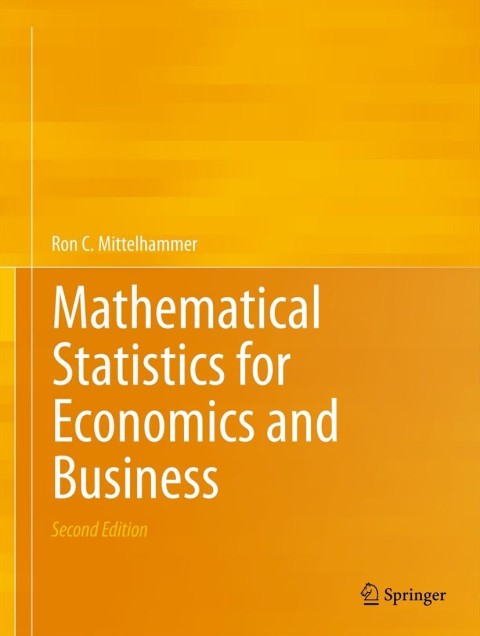In each case, indicate whether the statement regarding the relationship (mathbf{Y}=mathbf{x} boldsymbol{beta}+boldsymbol{varepsilon}) is true or false, and
Question:
In each case, indicate whether the statement regarding the relationship \(\mathbf{Y}=\mathbf{x} \boldsymbol{\beta}+\boldsymbol{\varepsilon}\) is true or false, and justify your answer.
(a) Let the random \((n \times 1)\) vector \(\mathbf{Y}\) represent a random sample from some composite experiment, where \(\mathrm{E}(\boldsymbol{\varepsilon})=\mathbf{0}\), and \(\mathrm{E}\left(\boldsymbol{\varepsilon} \boldsymbol{\varepsilon}^{\prime}ight)=\sigma^{2} \mathbf{I}\). Suppose the \(\mathbf{x}\)-matrix has full column rank, but that the first and second columns of \(\mathbf{x}\) are nearly linearly dependent and, as a result, the determinant of \(\mathbf{x}^{\prime} \mathbf{x}\) is near zero, equaling \(.273 \times 10^{-7}\). In this case, although \(\hat{\boldsymbol{\beta}}=\left(\mathbf{x}^{\prime} \mathbf{x}ight)^{-1} \mathbf{x}^{\prime} \mathbf{Y}\) is still an unbiased estimator, it is no longer BLUE (i.e., it loses its "best" property of having the smallest covariance matrix in the linear unbiased class of estimators).
(b) The \(\varepsilon_{i}^{\prime}\) s are homoskedastic and jointly independent with \(\mathrm{E}\left(\varepsilon_{i}ight)=\delta eq 0 \forall\) i. Also, \(\mathbf{x} \boldsymbol{\beta}=\beta_{1} \boldsymbol{\iota}+\beta_{2} \mathbf{Z}\) where \(\boldsymbol{\iota}\) is an \((n \times 1)\) column vector of 1 's, and \(\mathbf{Z}\) is a \((n \times 1)\) column vector of explanatory variable values. Then if \(\hat{\boldsymbol{\beta}}\) is the least-squares estimator of \(\boldsymbol{\beta}, \hat{\beta}_{2}\) is the BLUE of \(\beta_{2}\).
(c) The disturbance terms are related as \(\varepsilon_{t}=ho \varepsilon_{t-1}+V_{t}\) where the \(V_{t}^{\prime}\) s are iid with \(\mathrm{E}\left(V_{t}ight)=0\) and \(\operatorname{var}\left(V_{t}ight)=\sigma^{2}\) \(\forall \mathrm{t}\), and \(|ho|<1\). The least squares estimator is both BLUE and consistent.
Step by Step Answer:

Mathematical Statistics For Economics And Business
ISBN: 9781461450221
2nd Edition
Authors: Ron C.Mittelhammer





